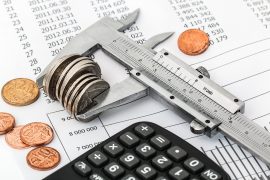The key feature of bubble wrap is its ingenious design, consisting of rows of air-filled bubbles trapped between layers of durable plastic. These bubbles act as shock absorbers, effectively cushioning delicate items and minimizing the risk of damage caused by impacts and vibrations during transit. This cushioning effect is particularly crucial for fragile goods such as glassware, electronics, and ceramics, which require extra care and protection.
Bubble wrap’s ability to conform to various shapes and sizes is another reason for its widespread popularity. Regardless of the item’s form, bubble wrap can be easily wrapped around it, ensuring a snug fit and maximum protection. The pliability of bubble wrap allows it to mold to the contours of the item, creating a customized protective layer. This versatility makes it suitable for a wide range of products, from small and delicate trinkets to larger, bulkier items.
In addition to its protective qualities, bubble wrap is lightweight and cost-effective. Its lightweight nature helps minimize the overall weight of the shipment, resulting in reduced shipping costs. Moreover, bubble wrap is available in various sizes and thicknesses, allowing businesses to select the most suitable option based on their specific shipping requirements. This flexibility ensures that the right amount of cushioning is provided without adding unnecessary weight or volume to the package.
The ease of use and convenience associated with bubble wrap further contribute to its popularity. Rolls of bubble wrap are readily available and can be easily cut to the desired length, making it adaptable to various packaging needs. It is also incredibly user-friendly, as it can be wrapped, folded, or secured with tape to ensure a snug and secure fit around the item. Bubble wrap’s self-sealing properties are an added advantage, eliminating the need for additional adhesives or fasteners.
Beyond its primary use for packaging, bubble wrap finds secondary applications in other industries. It is commonly used for surface protection during storage or moving, preventing scratches, dings, and scuffs on furniture, appliances, or other delicate surfaces. Additionally, bubble wrap is utilized for insulation purposes, effectively trapping air and providing thermal insulation in construction and DIY projects.
From an environmental perspective, it is worth noting that bubble wrap is available in eco-friendly variations. These options are made from recycled materials or are biodegradable, addressing concerns about plastic waste. Businesses can opt for these environmentally conscious alternatives to align their packaging practices with sustainability goals.
In conclusion, bubble wrap has rightfully earned its reputation as a cushioning champion for safe and secure shipping. Its unique design, versatility, and lightweight nature make it an ideal choice for protecting fragile items during transit. With bubble wrap, businesses can ensure that their products reach customers in excellent condition, reducing the risk of returns and enhancing customer satisfaction. Moreover, the convenience and cost-effectiveness of bubble wrap, along with its secondary applications, make it a valuable packaging material across various industries.
By investing in bubble wrap, businesses prioritize the safety and protection of their shipped goods, safeguarding their reputation and customer trust. With its reliable cushioning capabilities, bubble wrap proves to be an essential tool in the world of shipping and logistics.





